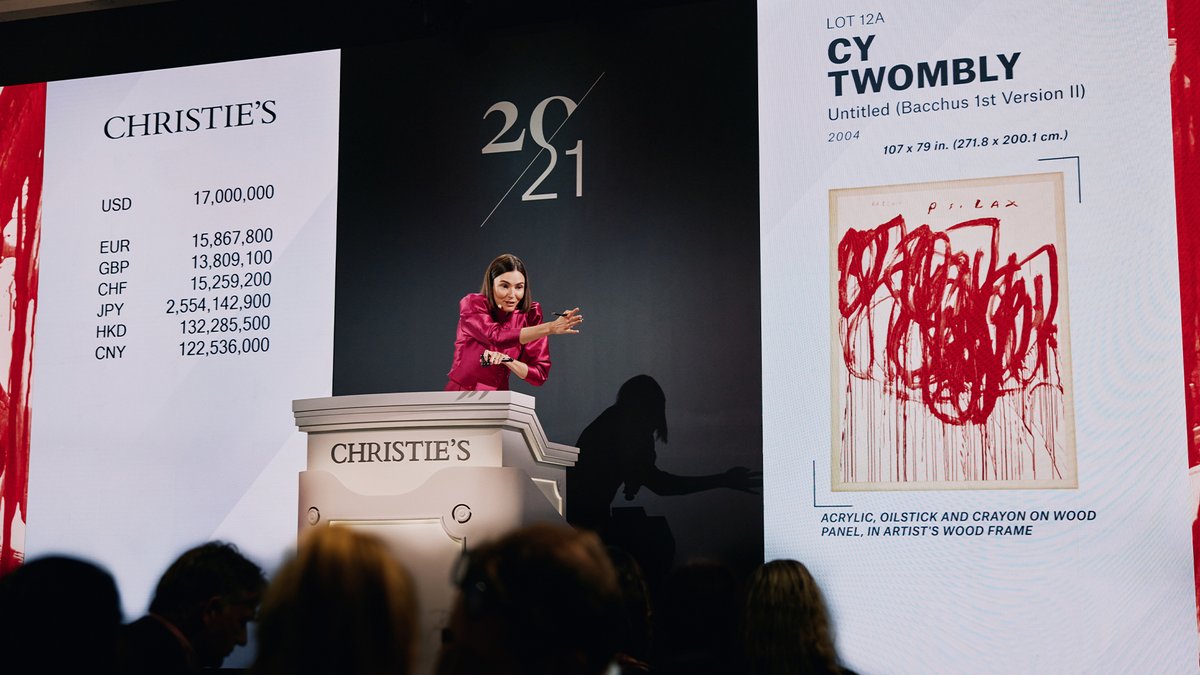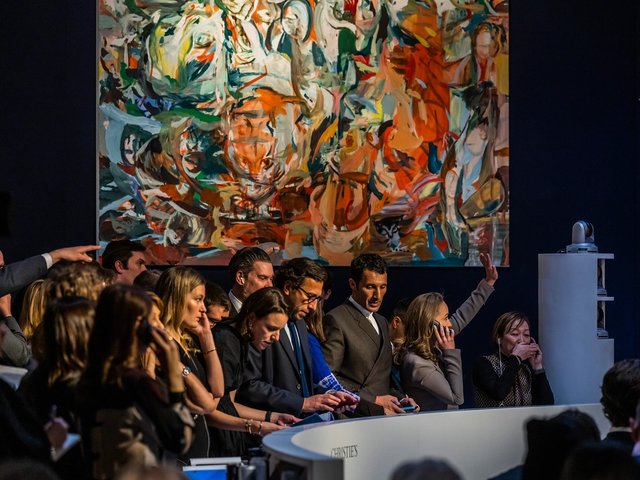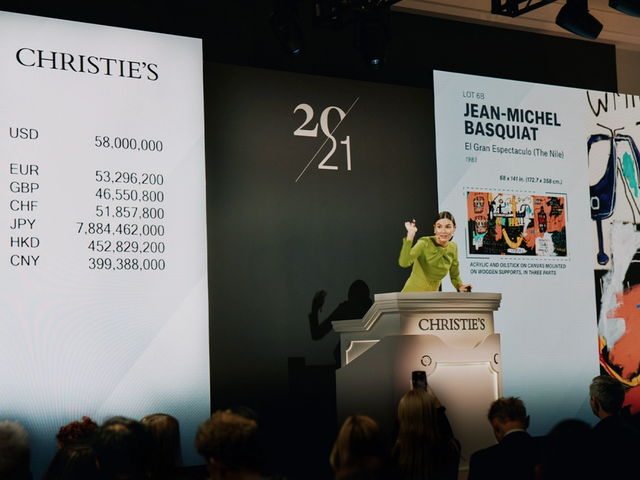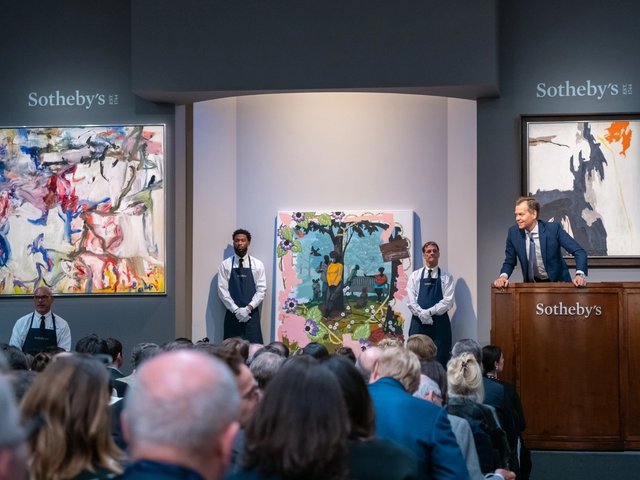An art industry hoping New York’s autumn auction season would steady the market’s nerves found only modest relief at best in Christie’s 21st century evening sale Tuesday (7 November).
The results often confounded the conventional wisdom about buyers’ priorities in the continuing 2023 market correction, as bidders repeatedly jousted over works by young and relatively unproven artists, while multiple blue-chip lots by household names found buyers below estimate, failed to sell at all or were withdrawn at the 11th hour.
The sale brought in a hammer total of $88.4m ($107.5m with fees), beneath its revised estimate range of $93m-$134.2m (which excised two withdrawn lots: a Mark Bradford canvas and a Jean-Michel Basquiat drawing with a combined presale expectation of $6.5m-$9.5m.)
Counting the pair of withdrawals and two passed lots, 39 of the 43 works originally intended to cross the block found buyers, good for a sell-through rate of 90.7%. (The figure rises to 95.1% if the two withdrawn lots are excused.)
Bidding for the auction’s first five lots was lively and competitive, particularly for the works by three ultra-contemporary artists that opened the proceedings. Thirty-six-year-old Stefanie Heinze’s Third Date (2020) more than tripled its low expectation by fetching $190,000 ($239,400 with fees). Jenna Gribbon’s double portrait Regarding Me Regarding You and Me (2020) followed up by nearly quadrupling its low estimate, making $380,000 ($478,800 with fees). Sanya Kantarovsky’s Charnel Field (2022) doubled its low target by hammering at $160,000 ($201,600 with fees).
The momentum continued into the next two lots by living artists a generation older. Intersection of Color: Loge, a 2019 painting by Reggie Burrows Hodges, sold for $580,000 ($730,800 with fees) against a $300,000-$500,000 expectation. Henry Taylor’s “Batman” Part Alien (2018), carrying an identical estimate range, one-upped its predecessor by bringing $650,000 ($819,000 with fees).
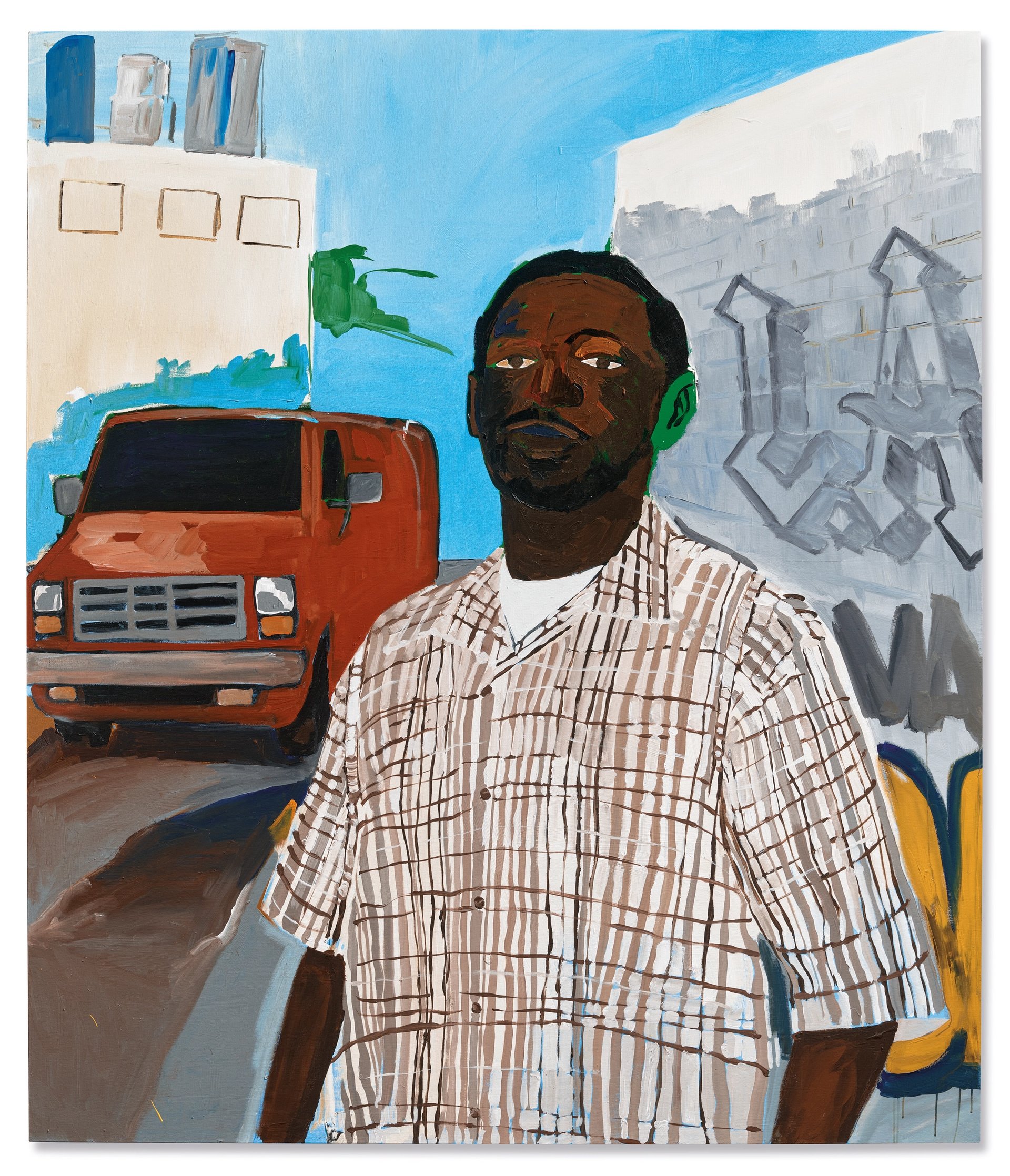
Henry Taylor's “Batman” Part Alien (2018) Courtesy Christie's
But the energy in the room downshifted noticeably during the competition for the sale’s first trophy lot, an untitled 1981 Basquiat canvas estimated to bring up to $15m. Roughly one minute after Georgina Hilton, the evening’s auctioneer, opened the bidding, she brought the hammer down at the work’s $10m low estimate. (Fees lifted the final price to $11.9m; the painting carried both a house guarantee and a third-party irrevocable bid.)
The most valuable work of the evening performed slightly worse relative to presale expectations just four lots later. Cy Twombly’s monumental Untitled (Bacchus 1st Version II), a 2004 painting dominated by red scribbles and text inspired by Greek mythology, picked up only a few bids and quietly sold for $17m (just under $20m with fees), below its $18m-$25m estimate. (This lot also came backed by a house guarantee and a third party.)
The excitement among buyers escalated drastically for the following lot, Bruise Painting “Picture Maker” (2021) by Rashid Johnson. Bidders quickly drove the price past the work’s $1.2m high estimate, and Hilton’s gavel fell at $1.4m ($1.7m with fees).
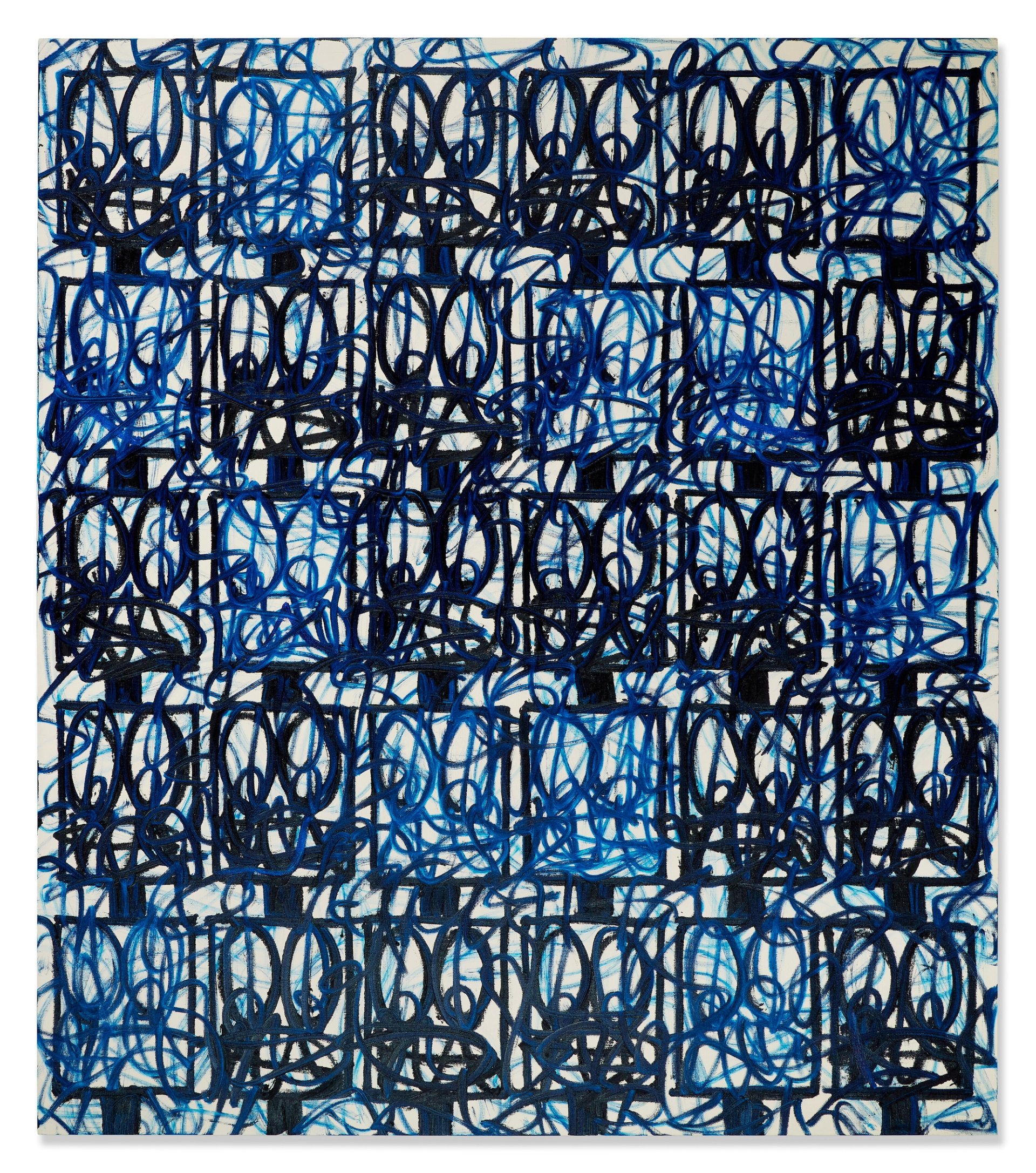
Bruise Painting “Picture Maker” (2021) by Rashid Johnson Courtesy Christie's
Yet any hopes that this spark would ignite extended demand were snuffed out when the next lot, John Currin’s 1999 dual female nude Nice 'n Easy (est $7m-$10m), passed at $6.5m. The last time the painting appeared at auction, in 2016 at Christie’s New York, it sold for $12m with fees.
Immediately afterward, an untitled 1982 Keith Haring painting sold for just $2.2m ($2.7m with fees), well below its $3.5m low expectation, and Mark Bradford’s Window Shopper (2005) passed at $1.8m against an estimate of $2m-$3m.
So it went for multiple stretches of the sale, as pulse-quickening peaks rapidly gave way to mood-dampening troughs.
For instance, roughly five minutes of bidding sent Jia Aili’s apocalyptic triptych Combustion (2016) to a hammer price of $3.9m (nearly $4.8m with fees), a record amount that more than doubled the high estimate. The next lot set another artist-best, when A Thistle Throb (2021) by 30-year-old Jadé Fadojutimi fetched almost $1.4m ($1.68m with fees), about twice its $700,000 high target.
But the following two works, by George Condo and Yayoi Kusama, each hammered beneath their respective low estimates, before a late portrait by Barkley L. Hendricks expected to fetch $2m-$3m presale instead passed at $1.8m. (Curiously, Christie’s reopened bidding on the Hendricks at the end of the night and sold it for a hammer price $100,000 lower, leading to a premium-inclusive price of $2.1m.)

Barkley L Hendricks’ Triple Portrait: World Conqueror (2011) Courtesy Christie's
Later in the evening, Derek Fordjour’s marching-band scene Rhythm & Blues (2020) vaulted more than two times higher than its $250,000 low estimate, hammering at $580,000 ($730,800) on the strength of the sale’s largest pool of phone bidders, according to Hilton. The momentum was immediately sapped again, however, when she reminded the audience that the following lot, a large Mark Bradford anticipated to bring up to $5m, had been withdrawn.
Although the auction reinforced that there is still little cause for despair in the market, these jarring reversals suggest that the unevenness felt at the auction sector's high end for the first 10 months of 2023 may persist through the final two. All eyes will now turn to Sotheby’s Wednesday night (8 November) to see if the house’s dedicated evening sale of the Emily Fisher Landau collection can change the narrative. That prospect seems at least slightly more remote after Christie’s 21st century evening sale than it did before.


